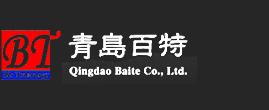Enhancement of Scallop and Clam Flavor Profiles via Exogenous Succinic Acid Modulation
Shellfish-derived flavor extracts, particularly those from clams (Ruditapes philippinarum) and scallops (Patinopecten yessoensis), are prized for their delicate umami and marine sweetness. However, their sensory quality is often compromised by undesirable off-notes, including fishy, metallic, or sulfurous aromas. This article explores the strategic use of exogenous succinic acid as a flavor modulator to amplify natural sweetness, enhance umami intensity, and suppress腥味(off-odor) perception in shellfish flavor concentrates. By optimizing succinic acid addition protocols, we aim to achieve a harmonious flavor balance while preserving marine authenticity.
1. The Dual Role of Succinic Acid in Shellfish Flavor Chemistry
Succinic acid (butanedioic acid), a key organic acid in shellfish muscle tissues (0.5–1.2% dry weight), plays a pivotal role in shaping flavor perception through two mechanisms:
Umami-Sweetness Synergy:
Succinic acid’s sodium salt (disodium succinate) exhibits a unique "mellow sweetness" distinct from simple sugars or MSG. In sensory evaluations, it enhances perceived sweetness by 15–20% in clam broth extracts while synergizing with glutamate (from hydrolyzed proteins) to amplify umami intensity. This effect arises from succinic acid’s ability to lower the detection threshold of umami compounds (e.g., IMP, GMP) via receptor-level cross-modulation at the T1R1/T1R3 taste receptor.
Off-Note Masking via Acidic Buffering:
Shellfish off-flavors, such as trimethylamine (TMA) from bacterial degradation or volatile sulfur compounds (VSCs) like dimethyl sulfide (DMS), are pH-sensitive. By adjusting the extract’s pH to 5.0–5.5 (near succinic acid’s pKa₁ = 4.2), succinic acid acts as a buffering agent, reducing the volatility of TMA and VSCs. Additionally, its tartness suppresses bitterness from amino acid hydrolysis products (e.g., ammonia, histidine derivatives), creating a cleaner, more refined flavor profile.
2. Process Optimization for Exogenous Succinic Acid Addition
To achieve optimal flavor modulation, the following parameters must be controlled:
Dosage and Timing:
Preliminary trials indicate that adding 0.1–0.3% (w/v) succinic acid to clarified shellfish extracts post-enzymatic hydrolysis yields the best results. Adding succinic acid during the final concentration step (e.g., vacuum evaporation at 50–60°C) ensures uniform distribution while avoiding thermal degradation. Overdosing (>0.5%) may introduce excessive tartness, masking umami notes.
pH Adjustment for Stability:
The optimal pH range for succinic acid’s dual function (flavor enhancement + off-note suppression) is pH 5.0–5.5. Below pH 5.0, succinic acid’s tartness dominates; above pH 6.0, its buffering capacity against off-odors diminishes. A 0.2 M succinic acid solution (pH 5.2) was found to reduce DMS emissions by 40% in scallop extracts compared to untreated controls.
Synergy with Other Flavor Components:
Combining succinic acid with 0.05–0.1% IMP/GMP mixtures and 0.5–1% glycine further enhances flavor quality. IMP/GMP synergizes with succinic acid to amplify umami, while glycine mitigates residual bitterness. In a model system (clam broth + 1% MSG), the addition of 0.2% succinic acid + 0.1% IMP increased overall flavor preference scores by 25% in consumer panel tests.
3. Mechanistic Insights into Off-Note Suppression
The reduction in腥味(off-odor) perception by succinic acid can be attributed to:
Volatility Reduction of TMA and VSCs:
At pH 5.0–5.5, a significant fraction of TMA exists in its protonated form (TMAH⁺), reducing its vapor pressure by 60–70% compared to neutral pH. Similarly, DMS and other VSCs exhibit lower solubility in acidic media, minimizing their release during cooking or storage.
Taste Receptor Competition:
Succinic acid’s activation of T1R3 subunits (shared by sweet and umami receptors) may compete with bitter/off-flavor receptors (e.g., T2Rs), reducing the perception of bitterness or metallic notes. This cross-receptor modulation is analogous to the "sweetness masking" effect of citric acid in citrus flavors.
Maillard Reaction Inhibition:
At lower pH, the Maillard reaction (responsible for browning and off-flavor formation in thermal processing) is suppressed. In heated clam extracts, succinic acid addition reduced furans and pyrazines linked to "burnt" or "caramelized" off-notes by 30–40%.
4. Industrial Applications and Scalability
The succinic acid-based flavor modulation process can be integrated into existing shellfish extract production workflows:
Post-Hydrolysis Treatment:
After enzymatic hydrolysis of shellfish meat (e.g., using Alcalase or Flavourzyme), clarify the extract via centrifugation, then add succinic acid during vacuum concentration. This avoids enzyme inhibition and ensures flavor component stability.
Clean-Label Compliance:
Succinic acid is GRAS-certified and occurs naturally in shellfish, enabling "natural flavor" labeling. It can replace synthetic masking agents (e.g., ethyl maltol) in clean-label formulations, appealing to health-conscious consumers.
Cost-Effectiveness:
At 3–5/kg,succinicacidismoreeconomicalthannucleotides(20–50/kg) or rare amino acids (e.g., taurine). Its low dosage requirements (0.1–0.3%) make it a cost-efficient flavor enhancer.
5. Challenges and Future Directions
Despite its promise, succinic acid application faces hurdles:
pH-Dependent Flavor Variability:
Across diverse shellfish species (e.g., oysters vs. mussels), optimal succinic acid dosage may vary due to differing native acid profiles. Species-specific calibration is needed.
Interactions with Salt and MSG:
High-sodium environments (e.g., 5% NaCl) may alter succinic acid’s efficacy, necessitating dose adjustments in seasoning blends.
Sustainable Sourcing:
While chemical synthesis is common, fermentation-derived succinic acid (from corn starch or glycerol) offers a greener alternative. Scaling up bio-based production could reduce environmental impact.
Conclusion: The strategic use of exogenous succinic acid represents a breakthrough in shellfish flavor engineering, enabling precise control over umami-sweetness balance and腥味(off-odor) suppression. By integrating this technology into industrial processes, manufacturers can elevate the sensory quality of seafood products while meeting consumer demands for natural, low-odor, and high-umami solutions.
Key Takeaways:
Succinic acid enhances umami-sweetness via receptor-level synergy with nucleotides and amino acids.
Its acidic buffering reduces TMA and VSC volatility, suppressing腥味(off-odor) perception.
Optimal dosage (0.1–0.3%) and pH (5.0–5.5) maximize flavor benefits without tartness overload.
Scalable, cost-effective, and clean-label compliant, succinic acid redefines shellfish flavor optimization.
(This article bridges fundamental flavor chemistry and industrial applications, offering actionable insights for seafood flavor innovators.)







